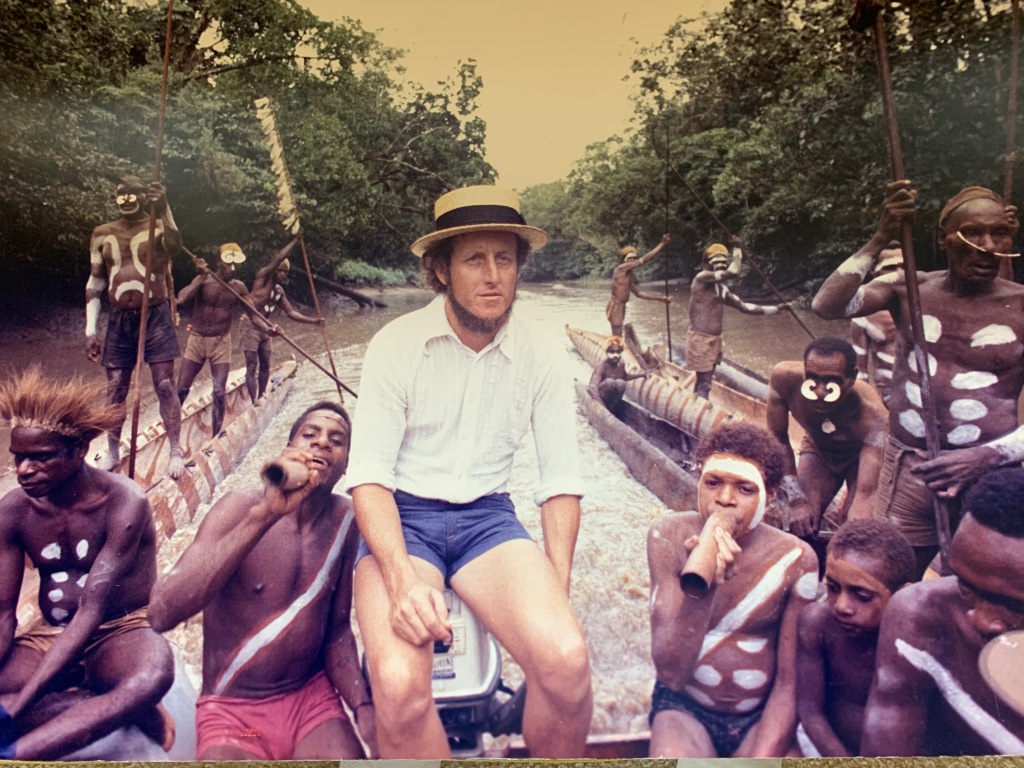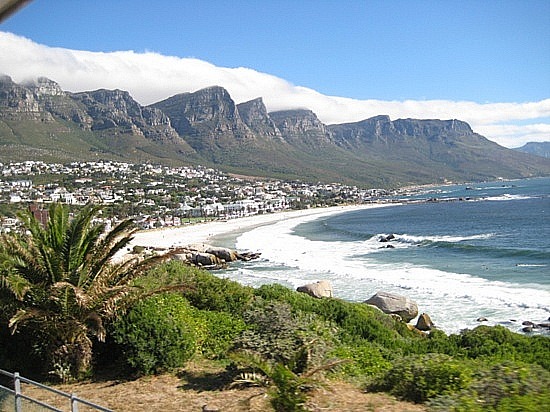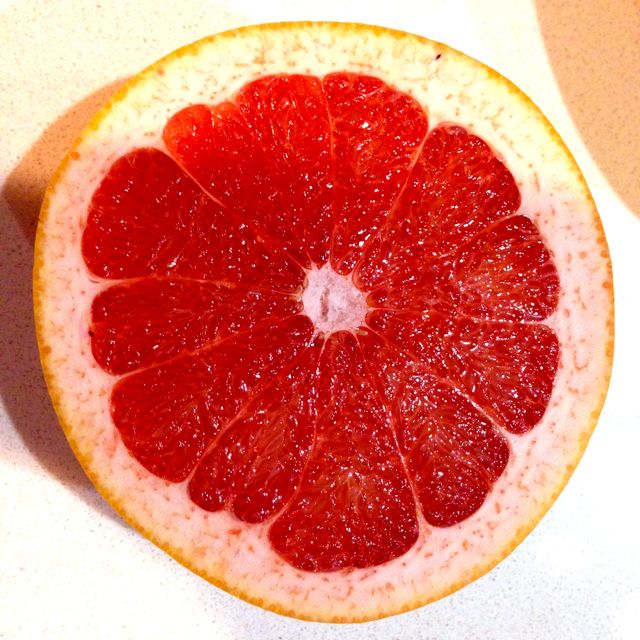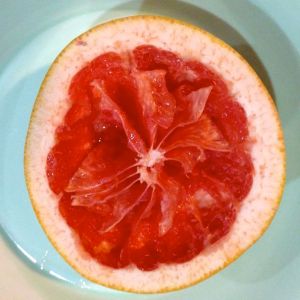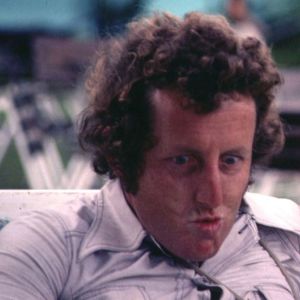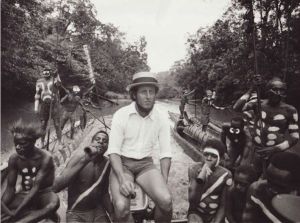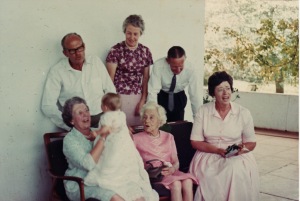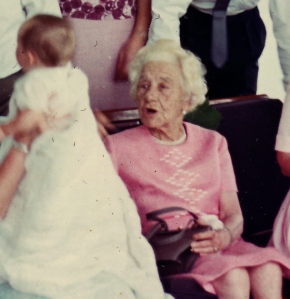I received this wonderful letter from Robert Steinbach, recounting his meeting with Lyall more than 40 years ago. Robert has kindly given me permission to use it in this blog. What follows is written in Robert’s words…
My wife and I just spent the morning tying the final knot in a thread that Dr. Lyall Watson placed in the fabric of my life in 1971 on the island of Sifnos.
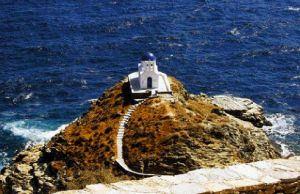
Chapel in Sifnos
Yesterday, I read a wonderful article in the Stanford alumni magazine about Alice Coogan. In the closing paragraphs, the author wrote about Alice meeting Lyall Watson on the Orinoco River in 1991, her marriage to Lyall and her death shortly thereafter.
My urge to contact Lyall was crushed by a comment in the author’s credits that Lyall had died in 2008. Our effort to answer questions and bring closure (including 2008 obituaries from the UK available in seconds on the Internet — amazing) led to your blog and the invitation to share stories about Lyall. Your blog makes it clear that my brief, chance encounter was not as unique as it felt. Clearly, his charismatic aura provided instant connections wherever he went throughout the world. His omnivorous approach to science provided him with synergetic insights unavailable to many.
I was on a six-month walkabout to my home in San Diego from Mombasa, Kenya where I had debarked from a sabbatical leave oceanographic expedition. Lyall arrived in the port of Kamares, Sifnos – white pants and a canvas sea bag as I recall — on May 21, 1971. He presented himself as a professional nomad and we traded the usual information that travelers do. I connected with him again that evening as we participated in Kostas Name Day celebrations. Everyone in the village named Kostas has an open house with food and drink. He was so worldly and I such a novice that I didn’t realize until today that he was seven years my junior.
As we moved from party to party he told me of the house he built from scratch in Mozambique. He harvested the wood for the structure, melted the sand for windows and forged the nails to hold it together. In the end, he was so sick of it that he walked off and left it.
He was in Greece for a reunion with a Russian countess at the Temple of the Athenian Zeus at midnight on the Summer Solstice. Their initial meeting had been nine years prior. They parted without exchanging contact information, but agreed to meet again three years later at a given time and place. That reunion took place – she was now married — and they agreed to meet in another three years. At the second reunion she had children and this was to be the third reunion.
Fascinated by the story, I gave him my post-solstice mail drop and requested a report. I received a postcard from him when I got to Copenhagen that an era had ended. She didn’t show up and sadly, of course, no further information would ever be available.
As brief as my encounter was, Lyall and I exchanged letters a few times and he sent me a copy of Supernature when it was published. Reading it with my bride, other of Lyall’s books and the stories above, gave her a sense of having met him as well.
Since then, news of his publications and adventures has occasionally appeared and we have appreciated his incredible skill with knowledge, people and institutions. We have lost a great spokesperson for the joy of curiosity and exploration.
Unfortunately, I have no pictures of Lyall in Sifnos. In the non-digital days of expensive film and postal service only, I did little more than exchange addresses with interesting travelers I met. I regret that I have no photos of Lyall to contribute to your blog, I found several here, in particular those of Louis Egan (July 26, 2012), that show him as I remember him. Many of the posts make me envious of those who were destined to spend more time with him than I did.
The only evidence of my connection with Lyall is this entry from my traveling address book. It’s a bit charred around the edges because it was in a metal box when our condo burned down in the 2003 San Diego wildfires.
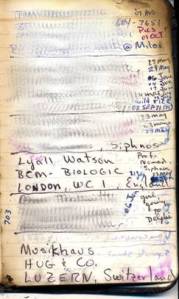
the page from Robert’s address book with Lyall’s details
Thanks for starting the blog – a wonderful tribute to your uncle and a gift to those who respected him and were changed by his writing. I have appreciated the posts from people who knew him far better than I and it has filled in many missing strands in the Lyall Watson thread of my life.
Good luck on your projects, and best wishes.
Robert and Virginia Steinbach, San Diego, CA
